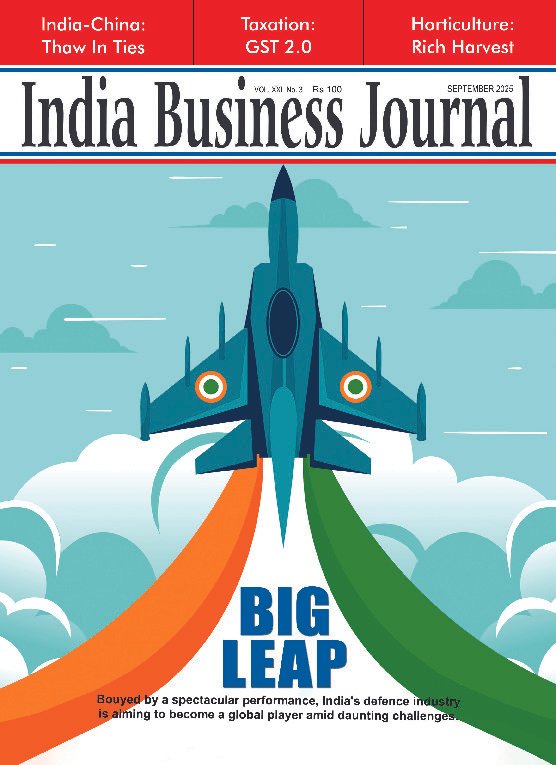ECONOMY
Muted Q1 growth despite a favourable base effect portends a sharper slowdown ahead
- IBJ Bureau
- Sep 03, 2022

Economic
growth numbers for the first quarter (Q1) of 2022-23 were quite disappointing.
At 13.5 per cent, the Q1 Gross Domestic Product (GDP) figures were lower than
the median forecast of 14.5 per cent. The numbers were woefully lower than the
Reserve Bank of India’s estimate of 16.2 per cent. That the growth statistics
sagged despite a favourable base effect – growth in the year-ago quarter (Q1 of
2021-22) was muted by the Omicron impact – portends to a sharper slowdown in
quarters to come.
Yet,
the dark cloud of GDP had a few silver linings. The Q1 growth in absolute
numbers of Rs 36.85 lakh crore got a big boost from 4.5 per cent y-o-y growth
in agriculture. The farm sector seemed to have shrugged off the impact of heat
wave to stage a promising performance.
There
was good news on the private consumption and private investments front too.
Private Final Consumption expenditure, which accounts for a sizeable chunk of
demand-side GDP, grew by 26 per cent and accounted for a whopping 59.9 per cent
of the Q1 GDP. Investments too put up a good show after several quarters of
gloom. The share of Gross Fixed Capital Formation or investments in the economy
rose to 34.7 per cent in the quarter in question. The numbers are highly
significant, given that share of investments had slumped to below 30 per cent
in the past many quarters.
But
going past the silver linings, the GDP cloud got intensely darker. Manufacturing
grew at a disappointing 4.8 per cent. Construction – one of the largest
job-generating sectors – expanded by 14.7 per cent, thanks again to the helpful
base effect. However, growth remained anaemic when compared to the sector’s
pre-pandemic level. Among the services sector, trade, hotels, transport and
communication continued to be points of concern, with growth remaining well
below their pre-pandemic levels.
This
was the last quarter of favourable base effect. GDP growth will begin to
moderate henceforth as the base effect normalises in coming quarters. In its
recent update, the RBI has also alluded to this trend. Moreover, there are
considerable downside risks to growth in upcoming quarters. As central banks
across the world continue to battle inflation, interest rates will remain
elevated amid tight liquidity conditions. Global demand will weaken and impact exports.
Back home, consumption may be constrained as wage growth slows and high inflation
erodes purchasing power of people, especially in the lower rungs of society.
The
pain in rural and unorganised sectors is quite acute. Flat rural wages and
increased demand for MGNREGA work confirm this. Declining sale of FMCG goods,
entry-level automobiles and two-wheelers prove beyond doubt that there is
severe distress among lower-income groups.
If one cares to go beyond the GDP numbers, there is a whole lot of disturbing data pointing to dismal state of affairs among marginalised sections of society. The latest report of the National Crime Records Bureau reveals that the share of suicides by daily-wage earners among total suicides in the country in 2021 rose to 25.6 per cent. In absolute terms, 42,004 daily-wage earners ended their lives among 1,64,033 total suicides in the country last year. And daily-wage earners do not include farmers and farm labourers, who have been separately classified – 10,881 or 6.6 per cent of the total suicides.
These
suicides are not mere statistics. In fact, many of them are sole earning
members of their respective families, and their passing away plunges a large
number of their dependents into dire poverty. Under such circumstances, relentless
chest-thumping of India being the world’s fastest-growing economy is boorish
behaviour, to put it politely.





















Report By
View Reporter News